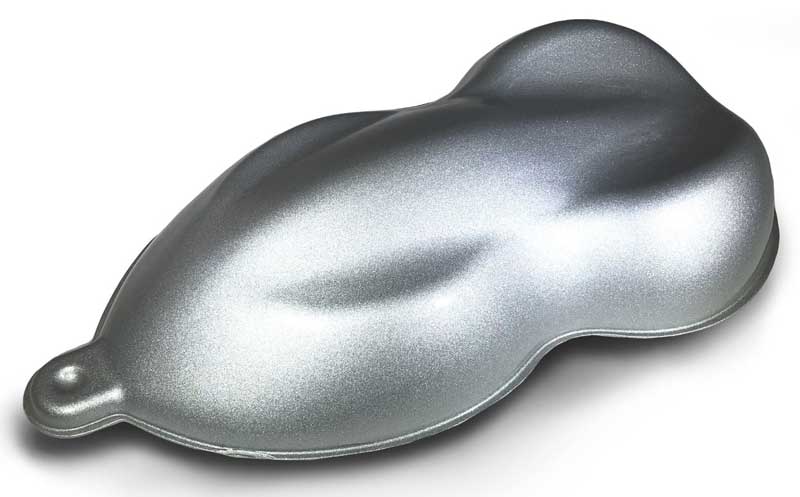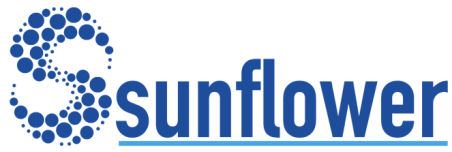
1. Analysis of the application fields of aluminum pigment industry
Aluminum pigment, also known as aluminum powder pigment, refers to metal
aluminum powder (also called aluminum silver powder) or aluminum powder
paste (also called aluminum silver paste) with scaly particle
structure, bright metallic luster and other pigment characteristics.
Aluminum-based pigments can provide bright metallic luster with high
color saturation while having excellent hiding power and corrosion
resistance. It is an indispensable additive for the production of
various products and an indispensable part of the metallic pigment
market. Its application The use is very wide. The consumption of
aluminum pigments is mainly concentrated in the fields of inks, coatings
and plastics. Therefore, the driving force for the growth of aluminum
pigments is mainly from the demand in the fields of inks, coatings and
plastics. At present, in the field of aluminum pigments in my country,
coating applications account for about 85%, ink applications account for
about 9%, plastic applications account for about 4%, and other
applications account for about 2%.
2. Analysis of the current situation of supply and demand in the aluminum pigment market
The research, production and application of aluminum pigments started in
European and American countries. In the mid-1990s, with the wave of
economic globalization, aluminum pigment manufacturers such as Germany,
Japan, and the United States entered the Chinese market one after
another in order to increase supply, reduce costs, and enhance market
competitiveness. The decorative effects of their products caused market
concerns. extensive attention. In order to change the situation that the
highly decorative aluminum pigments urgently needed in my country's
coatings industry rely on imported products, the former Ministry of
Chemical Industry organized scientific research and research and
development of highly decorative flash aluminum pastes. In 1999, Mr.
Shenzhen Zu Xinglu produced silver dollar-shaped aluminum pigments,
successfully breaking the market monopoly of foreign companies in this
field. After entering 2000, affected by the rapid rise of key consumer
areas of aluminum pigments such as ships, automobiles, machinery and
equipment, and consumer electronics, my country's aluminum pigment
market has obtained unprecedented development opportunities. With the
increasing demand for aluminum pigments in China's coatings, inks and
other fields, domestic and foreign companies have begun to build
large-scale factories and produce aluminum pigments in China. After
2005, China's aluminum pigment product production and sales began to
accelerate growth, and it is one of the fastest growing pigment
varieties in my country in recent years. In 2018, China's aluminum
pigment output reached 59,200 tons. There is still huge room for
development in the aluminum pigment industry. It is expected that my
country's aluminum pigment market is expected to reach 100,000 tons by
2030, with a market value of more than 10 billion yuan, becoming one of
the important industrial raw materials.
Different fields have different requirements for aluminum pigments. For
example, automotive coatings, plastic coatings, and architectural
decoration coatings require aluminum pigments to have strong brilliance,
random color effect and weather resistance (acid resistance).
3. Analysis of the competitive landscape of the aluminum pigment market
In the aluminum pigment market, there are a large number of ordinary
aluminum pigment manufacturers, with simple product production
processes, low technical content, lack of specialized comprehensive
services, relatively low product prices, and fierce market competition.
With the large-scale production of aluminum pigments by domestic and
foreign companies in China, after 2005, the output of China's aluminum
pigment products began to accelerate, with an average annual growth rate
of about 10% from 2014 to 2018. As of 2018, there are about 50 domestic
aluminum pigment manufacturers with an annual production capacity of
45,000 tons.
At present, the major companies engaged in the production of aluminum
pigments include Japan’s TOYOALUMIMIUM, SILBERLINE, Germany Aika,
SCHLENK, and Hong Kong Sunflower Chemical Group.

Fourth, the future development trend of the aluminum pigment industry
In recent years, the aluminum pigment market has maintained a rapid
development model, and the industry will develop in the following
directions in the future:
1. The scale of the industry continues to expand and gradually develops towards a capital-intensive direction
With the development of domestic aluminum pigment preparation
technology, domestic high-end aluminum pigments have huge market
potential for import substitution of similar foreign products. The
development of high-end aluminum pigment products requires enterprises
to have certain technology and capital accumulation, and have strong
financial strength to invest in research and development. Can make
R&D results quickly realize high-quality large-scale production.
Therefore, the rapidly expanding market space has urged the resources of
the aluminum pigment industry to gradually concentrate on high-quality
companies with advanced technology, strong financial strength,
large-scale and high-efficiency industries, and the brand effect of
industry leading companies has become more obvious. As one of the few
manufacturing enterprises with mature and advanced technology, efficient
management and independent brands, Zuxing New Materials has a
relatively high level in the industry due to its rich medium and
high-end product lines, sound sales network, economies of scale and
stable product performance. With the development of industry trends, its
popularity and market influence will further strengthen its
competitiveness in the global aluminum pigment market.
2. The industry is upgraded to high-end manufacturing industry and promote the overall optimization of the industrial structure
Most of the aluminum pigment production enterprises in my country are
concentrated in the low-end market. The enterprise scale is generally
small, the R&D investment is low, and the overall competitiveness of
the enterprise is still far behind the international giants. As my
country's aluminum pigment industry gradually matures, Consumers'
requirements for the aesthetics, functionality and other qualities of
aluminum pigment terminal products continue to increase. Terminal
product companies have stricter requirements on the technical strength
and management capabilities of aluminum pigment suppliers. National
environmental protection regulations and policies are becoming more and
more perfect, making the industry backward Production capacity is phased
out. At the same time, the national strategic emerging industry
development plan and many other policies clearly stated that the new
material industry to which aluminum pigment belongs must be vigorously
promoted to integrate into the high-end manufacturing supply chain. The
development trend of the industry has urged aluminum pigment
manufacturers to continuously upgrade and transform to high-end
manufacturing, that is, through continuous capital integration and
R&D investment, to achieve continuous technological improvement,
large-scale production capacity expansion, and refined cost control, so
that product quality, The stability and technical content have been
steadily improved to maintain sufficient competitiveness in the global
aluminum pigment industry chain.
3. The supply chain reconstruction of the domestic automobile industry
and the rise of new energy vehicles provide new industry opportunities
In recent years, the state has intensively promulgated industrial
policies to encourage the development of new energy vehicles, and has
given a lot of policy support in many aspects such as purchase
subsidies, exemption of vehicle purchase tax, electricity prices,
construction of charging facilities, and the purchase of new energy
vehicles by public institutions. Under the influence of policy support
and market demand, the sales of new energy vehicles in my country
increased from about 17,600 in 2013 to 1.256 million in 2018. The rapid
development of domestic new energy vehicles provides new market
opportunities for domestic automotive coating companies. .
At present, my country's high-end automotive coatings are mainly
supplied by foreign manufacturers. With the rise of domestic automotive
manufacturers and the construction of automotive coating lines with new
technologies and new processes, the supply chain of the automotive
industry will be restructured for import substitution production.
Capable domestic automotive coating companies bring broad development
prospects. As an important application field of aluminum pigments, the
rapid rise of the domestic automotive coatings industry is bound to
drive the rapid development of the entire aluminum pigment industry. At
the same time, it also prompts aluminum pigment manufacturers to
gradually become energy-saving, environmentally friendly, and high-tech
in terms of technological innovation and product manufacturing.
Performance-based upgrade and transformation.
4. Aluminum pigment products are developing in the direction of
environmental protection, water-based, solvent-free, nanometer and
multifunctional
As an important raw material for the production of coatings, aluminum
pigments have been closely linked to the coatings industry. With the
increasing awareness of people's environmental protection and the
increasingly stringent environmental regulations, traditional
solvent-based coatings will gradually be replaced by more
environmentally friendly, low-VOC emission coatings, of which
water-based coatings are one of the key developments. At present, the
application and promotion of water-based aluminum pigments are still in
the early stages of development, which is one of the inevitable
development directions of the aluminum pigment industry. Its production
and technical capabilities have gradually become one of the core
competitiveness of aluminum pigment manufacturers.

